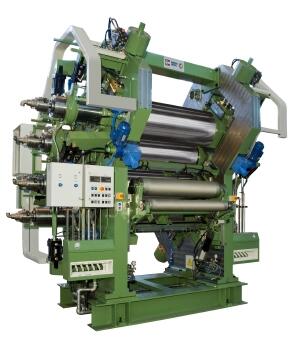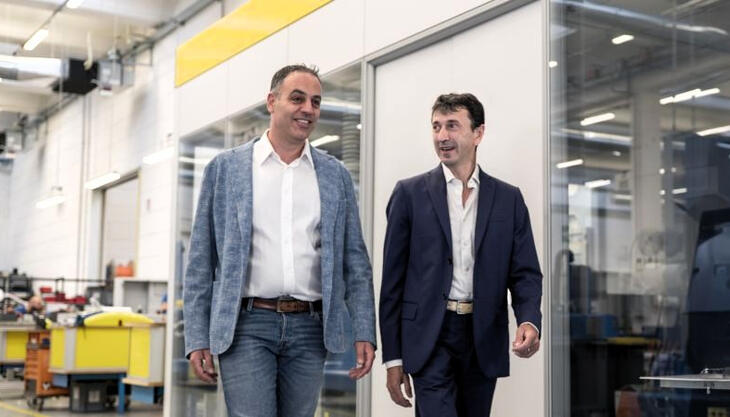Calenders for rubber: position and force under control

Comerio Ercole has patented the Hydrogap system for controlling the position and gap distance of the rolls in its rubber processing calenders and mixers. Each movable roll is actuated by two hydraulic pistons, which in turn are driven by oil fed by a pump and regulated via special servo-valves. The reference signal representing the set position of the movable roll is continuously compared with the feedback signal coming from the high precision electronic transducers installed on the machine. The closed loop control system corrects in real time any deviations from the value caused by lamination stresses between calender cylinders or imperceptible changes in environmental conditions (humidity, temperature etc.). It also can be interfaced with a thickness gauging system to ensure quick regulation without hunting. The position repeatability achieved by the system is equal to ±2 micron with a position accuracy for each bearing block in the range of ±5 micron. The rolls are adjusted at a speed of 1 mm/s, which can be increased to 10 mm/s for emergency opening.
The system offers the following advantages: no wear of mechanical parts; no mechanical clearance of moving parts; reduced start-up times; reduced handling costs; easier maintenance; quick roll positioning at recipe changes; high speed emergency opening; excellent position repeatability; protection of roll integrity in case of accidental passage of hard materials between rolls.
The Hydronip system, on the other hand, controls the pressure exerted by the rolls, optimizing the rubber coupling process. Load cells under the calender bearing supports are thus unnecessary and the lamination force is always readable and controllable, permitting the operator to select the optimum conditions for each product type.
In short, the Hydrogap system ensures a precise and repeatable positioning of movable rolls, one of the most important parameters in ensuring the quality of the calendered product, while Hydronip ensures optimum material coupling.



















